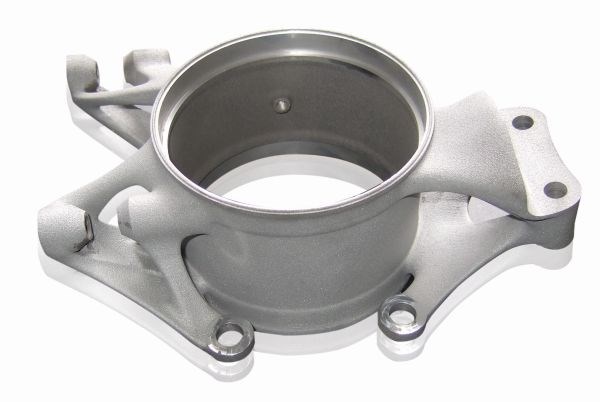Enabling Factors for Additive Manufacturing
In an interview with GE Capital, GE Global Research Center technology director Christine Furstoss was asked what factors will determine the speed of adoption of additive manufacturing into mass production applications. She described four.

Automotive knuckle photo courtesy of EOS and Rennteam Uni Stuttgart. Certain factors will enable additive manufacturing to be applied to an increasing number mass-production parts like this one.
In an interview with GE Capital, GE Global Research Center technology director Christine Furstoss was asked what factors will determine the speed of adoption of additive manufacturing into mass production applications. She described four.
Here is a paraphrase of her response. She says the enabling factors for additive manufacturing include:
1. Predictability. Manufacturers would benefit from software tools able to predict the outcomes of additive processes. GE is working with partners toward filling this gap.
2. Equipment. Mass production equipment has to not only achieve critical tolerances, but continue to hold them over time. GE is working with AM equipment suppliers by providing feedback on the machines’ performance with various materials over long periods of operation.
3. Materials. She anticipates a day when materials are not just adapted to additive manufacturing, but routinely developed specifically for additive processes.
4. Ecosystem. In addition to the makers and users of AM machines, there needs to be a more mature support system surrounding additive production. This includes companies supplying additive materials, as well as firms providing machine service and inspection services specifically related to AM.
Read the complete interview with Ms. Furstoss.
Related Content
-
With Electrochemical Additive Manufacturing (ECAM), Cooling Technology Is Advancing by Degrees
San Diego-based Fabric8Labs is applying electroplating chemistries and DLP-style machines to 3D print cold plates for the semiconductor industry in pure copper. These complex geometries combined with the rise of liquid cooling systems promise significant improvements for thermal management.
-
Video: 5" Diameter Navy Artillery Rounds Made Through Robot Directed Energy Deposition (DED) Instead of Forging
Big Metal Additive conceives additive manufacturing production factory making hundreds of Navy projectile housings per day.
-
VulcanForms Is Forging a New Model for Large-Scale Production (and It's More Than 3D Printing)
The MIT spinout leverages proprietary high-power laser powder bed fusion alongside machining in the context of digitized, cost-effective and “maniacally focused” production.















